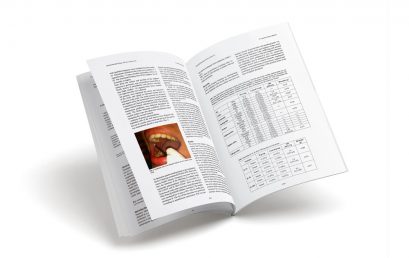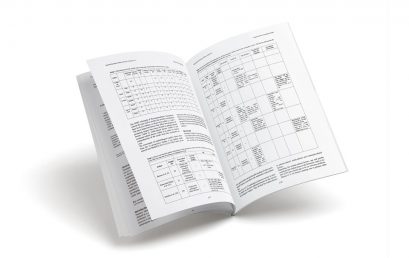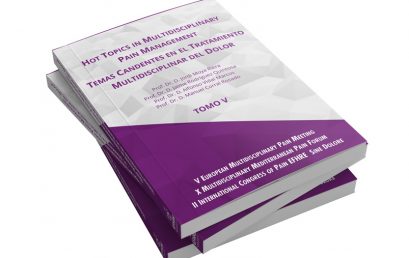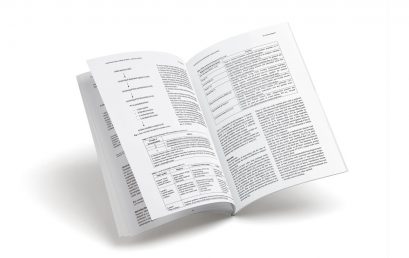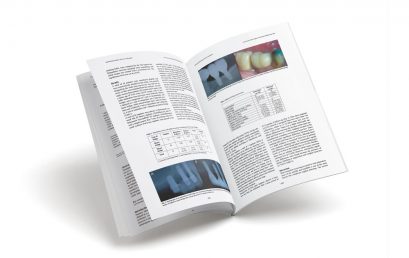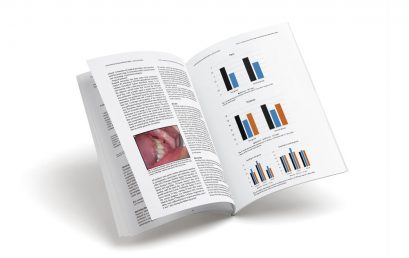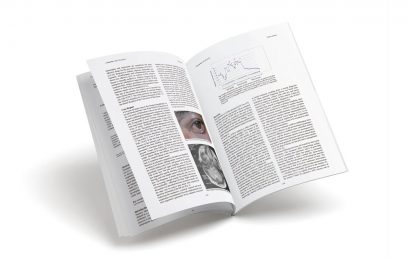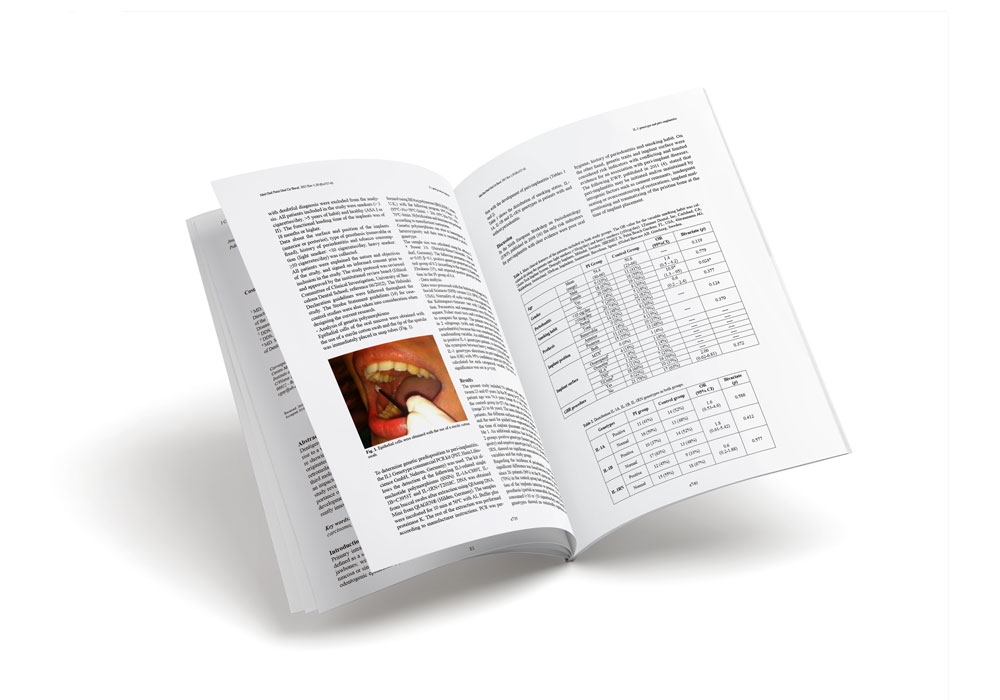
Clinical significance of interleukin-1 genotype in smoking patients as a predictor of peri-implantitits: A case-control study.
Background: Interleukin-1 (IL-1) is a proinflammatory cytokine that plays an important role in the pathogenesis of periodontitis, and so it might be useful to detect high-risk cases of peri-implantitis. It has been reported that IL-1 polymorphisms and smoking habit have a synergic effect, increasing the incidence of peri-implantitis. The aim of the present study was to evaluate the relationship between IL-1 gene polymorphisms and peri-implantitis in smoking patients. Material and Methods: A case-control study was performed in 27 patients with peri-implantitis and 27 patients
with healthy implants. All patients included were smokers. IL-1A-C889T, IL-1B+C3953T and IL-1RN+T2018C were identified by polymerase chain reaction (PCR) amplification in order to establish a relation between these variables and the presence of peri-implantitis. A bivariate analysis was performed and odds-ratio (OR) were calculated. Results: The incidence of peri-implantitis was significantly higher in patients with previous history of periodontitis (p=0.024; OR=10.9). Both groups were similar regarding IL-1A-C889T, IL-1B+C3953T and IL-1RN+T2018C genotypes. No increased risk in heavy smokers with IL-1 polymorphism was found.
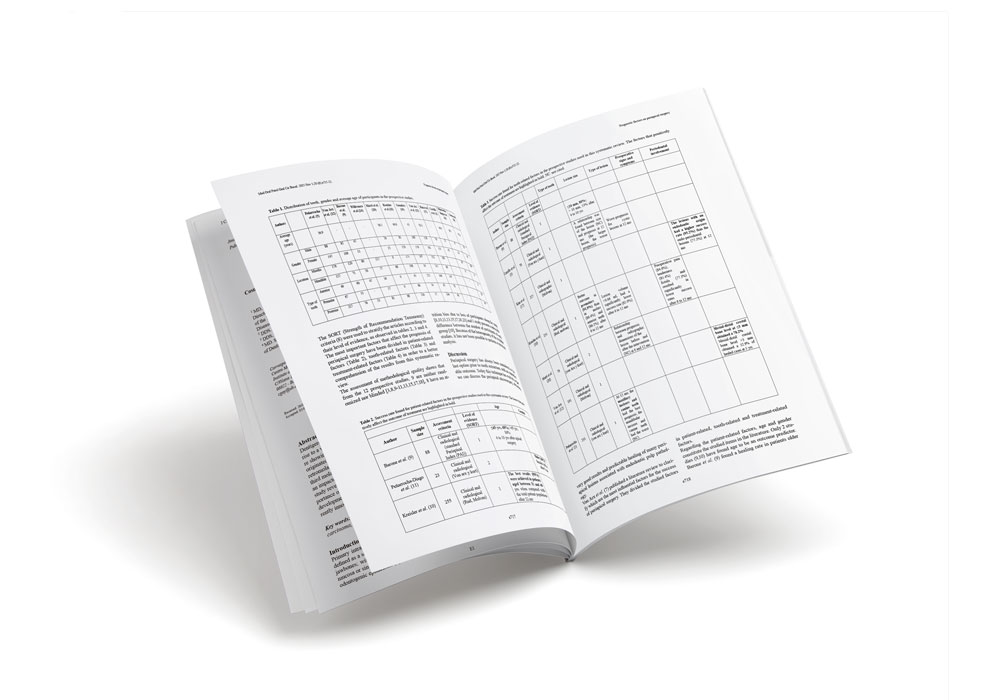
Prognostic factors on periapical surgery: A systematic review
Background: Analyze the most important prognostic factors when performing periapical surgery and compare the success rates of distinct authors.
Introduction: Periapical surgery is an approach to treat non-healing periapical lesions and it should be viewed as an extension of endodontic treatment and not as a separate entity. Material and Methods: A search of articles published in Cochrane, PubMed (MEDLINE) and Scopus was conducted with the key words “prognostic factors”, “prognosis”, “periapical surgery”, “endodontic surgery” and “surgical endodontic treatment”. The inclusion criteria were articles including at least 10 patients, published in English, for the last 10 years. The exclusion criteria were nonhuman studies and case reports. Results: 33 articles were selected from 321 initially found. Ten articles from 33 were excluded and finally the systematic
review included 23 articles: 1 metaanalysis, 1 systematic review, 2 randomized clinical trials, 6 reviews, 12 prospective studies and 1 retrospective study. They were stratified according to their level of scientific evidence using the SORT criteria. Conclusions: Factors associated with a better outcome of periapical surgery are patients ≤45 years old, upper anterior or premolar teeth, ≤10 sized lesions, non cystic lesions, absence of preoperative signs and symptoms, lesions without periodontal involvement, teeth with an adequate root-filling length, MTA as root-end filling material, uniradicular teeth, absence of perforating lesions, apical resection < 3 mm, teeth not associated to an oroantral fistula and teeth with only one periapical surgery.
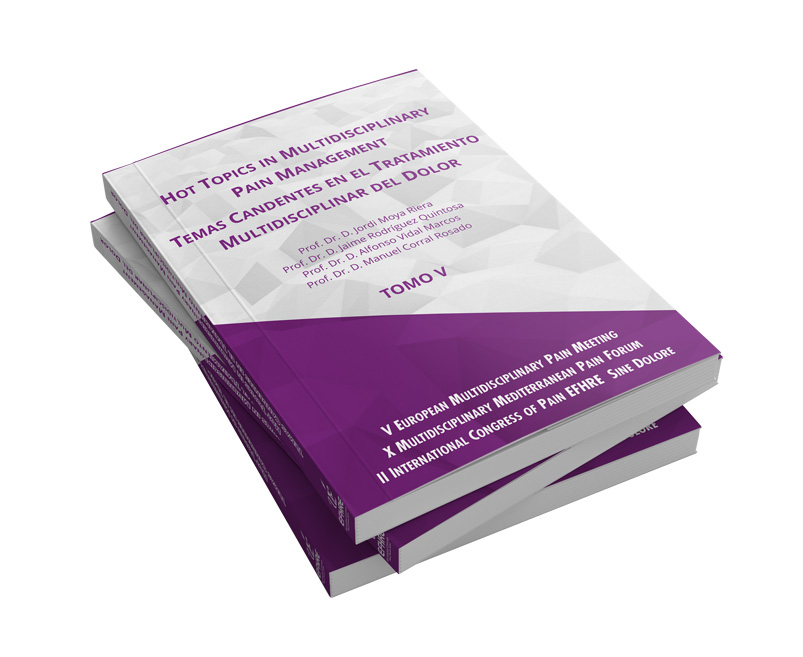
Hot Topics in Multidisciplinary Pain Management 2015
Palliative care of the terminal patient, the Role of the Rehabilitation Specialist in the Treatment of Pain ?, combination of opioids in chronic pain, use of opioids in chronic non-oncological pain? …
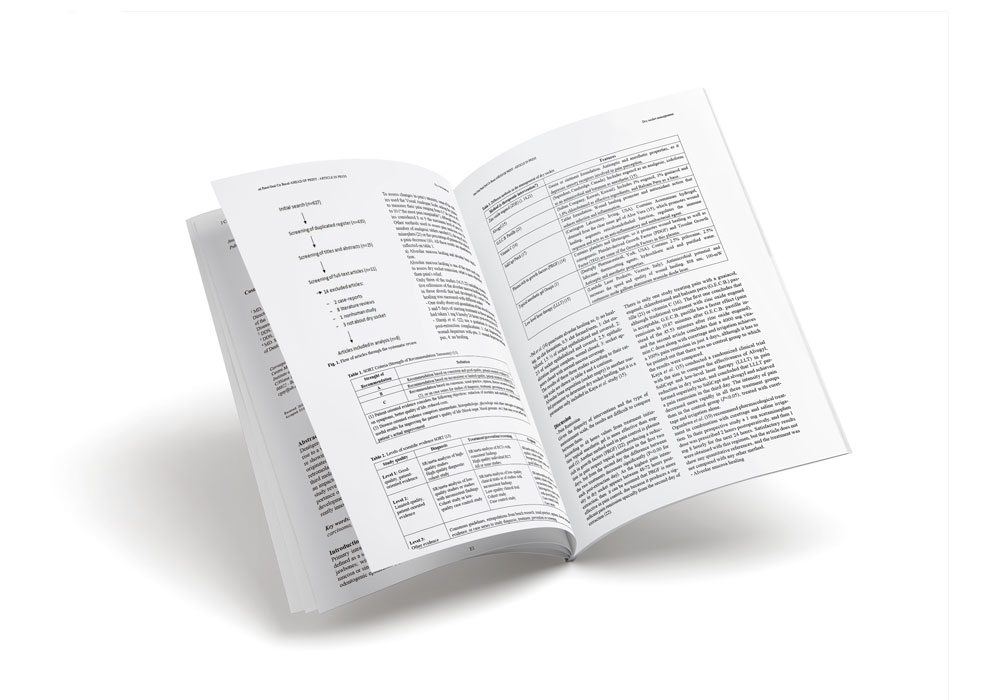
Efficacy of different methods used for dry socket management: A systematic review
Dry socket is one of the most common complications occurring after the extraction of a permanent tooth, but in spite of its high incidence there is not an established treatment for this condition. Objectives: Analyze the efficacy of different methods used in the management of dry socket regarding results of pain’s relief and alveolar mucosa healing compared to conventional surgical treatment of curettage and saline irrigation. Material and Methods: A Cochrane and PubMed-MEDLINE database search was conducted with the search terms “dry socket”, “post-extraction complications”, “alvogyl”, “alveolar osteitis” and “fibrynolitic alveolitis”, individually and next, using the Boolean operator “AND”. The inclusion criteria were: clinical studies including at least 10 patients, articles published from 2004 to 2014 written in English. The exclusion criteria were case reports and nonhuman studies. Results: 11 publications were selected from a total of 627. Three of the 11 were excluded after reading the full text. The final review included 8 articles: 3 prospective studies, 2 retrospective studies and 3 clinical trials. They were stratified according to their level of scientific evidence using the SORT criteria (Strenght of Recommendation Taxonomy). Conclusions: All treatments included in the review have the aim to relief patient’s pain and promote alveolar mucosa healing in dry socket. Given the heterogeneity of interventions and the type of measurement scale, the results are difficult to compare. Curettage and irrigation should be carried out in dry socket, as well as another therapy such as LLLT, zinc oxide eugenol or plasma rich in growth factors, which are the ones that show better results in pain remission and alveolar mucosa healing. Assessment alveolar bone exposure must be a factor to consider in future research. Taking into account the scientific quality of the articles evaluated, a level B recommendation is given for therapeutic interventions proposed for the treatment of dry socket.
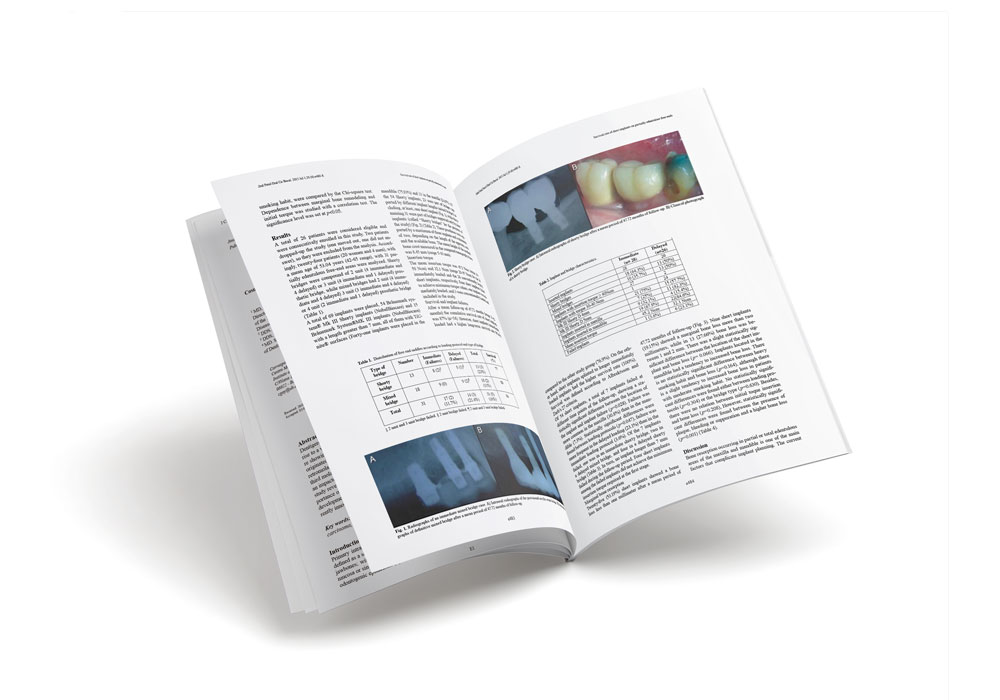
Survival of immediately versus delayed loaded short implants: A prospective case series study
Background: To assess and compare survival rates of immediately and delayed loaded short implants (7 mm) in free ends of a partially edentulous jaw with moderate-severe alveolar bone resorption.
Material and Methods: 24 patients with atrophic edentulous free-ends were included in this prospective study. Four study groups were monitored monthly and their behavior was evaluated: bridges supported only by short implants and mixed short and long implant bridge groups, both with immediate and delayed loading. Failures, bone loss, probing depth and bleeding on probing were evaluated.
Results: 54 Mk III Shorty TiU and 15 Brånemark System®MK III TiU implants with a length longer than 7mm were included in the study. Twenty-eight implants were inserted following the immediate loading protocol and 26 according a two-stage procedure, depending on the torque value. The cumulative survival rate of short implants was 87% (n=54) after a mean time of 47.72 months (range 33-62 months), showing statistically significant differences related to loading protocol (p=0.047). Short implants immediately loaded had a higher long-term survival rate (96.4%) compared to the other study group (76.9%). Besides, short implants splinted to longer immediately loaded implants presented the highest survival rate (100%). Twenty-five (53.19%) short implants showed a bone loss of less than one millimeter after the follow-up period. Statistically significant differences were found between bleeding on probing, presence of plaque or suppuration and a higher bone loss in both loading protocols (p=0.001). Conclusions: Immediate loading of short implants placed on free ends can be considered an option in the treatment protocol of patients with severe bone resorption especially if implants are splinted to others of greater length.
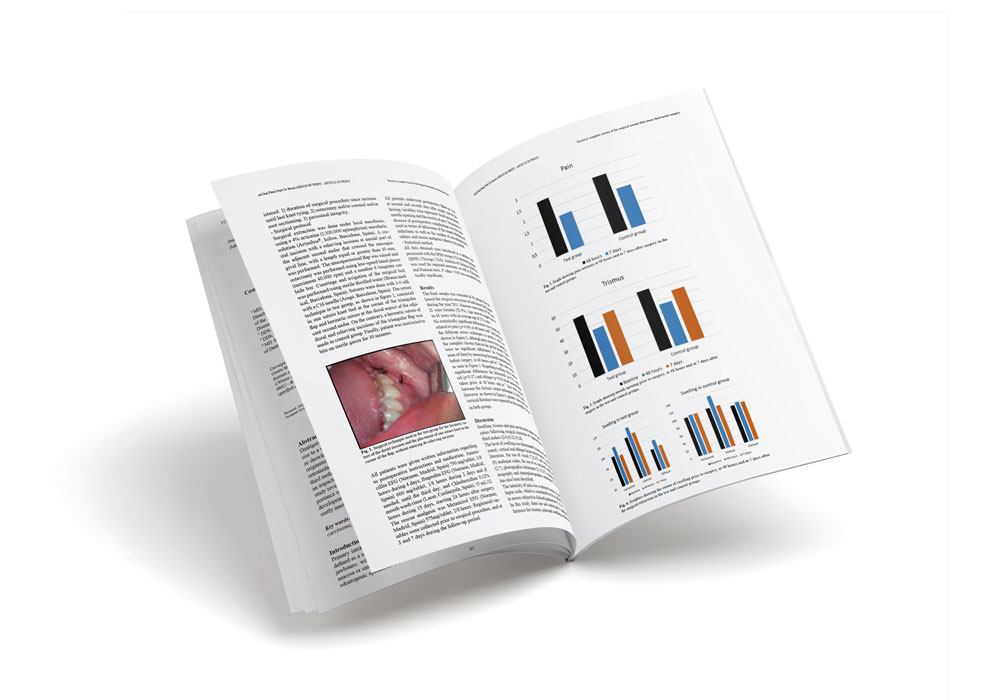
Effect of the suture technique on postoperative pain, swelling and trismus after removal of lower third molars: A randomized clinical trial
Purpose: To evaluate the intensity of pain, swelling and trismus after the removal of impacted lower third molars comparing two different suture techniques of the triangular flap: the complete suture of the distal incision and relieving incision and the partial suture with only one suture knot for closure of the corner of the flap and the closure of the distal incision, without suturing the relieving incision.
Patient and Method: A prospective, randomized, cross-over clinical trial was conducted in 40 patients aged from 18 to 45 years who underwent surgical extraction of impacted lower third molars at the Department of Oral Surgery in the Odontological Hospital of the University of Barcelona during the year 2011. Patients were randomly divided in 2 groups. Two different techniques (hermetical closure and partial closure of the wound) were performed separated by a one month washout period in each patient. Postoperative pain, swelling and trismus were evaluated prior to the surgical procedure and also at 2 and 7 days postoperatively. Results: No statistically significant differences were observed for pain (p<0.06), trismus (p<0.71) and swelling (p<0.05) between the test and the control group. However, the values of the three parameters related to the test group were lower than those for the control group. Conclusions: Partial closure of the flap without suturing the relieving incision after surgical extraction of lower third molars reduces operating time and it does not produce any postoperative complications compared with complete closure of the wound.
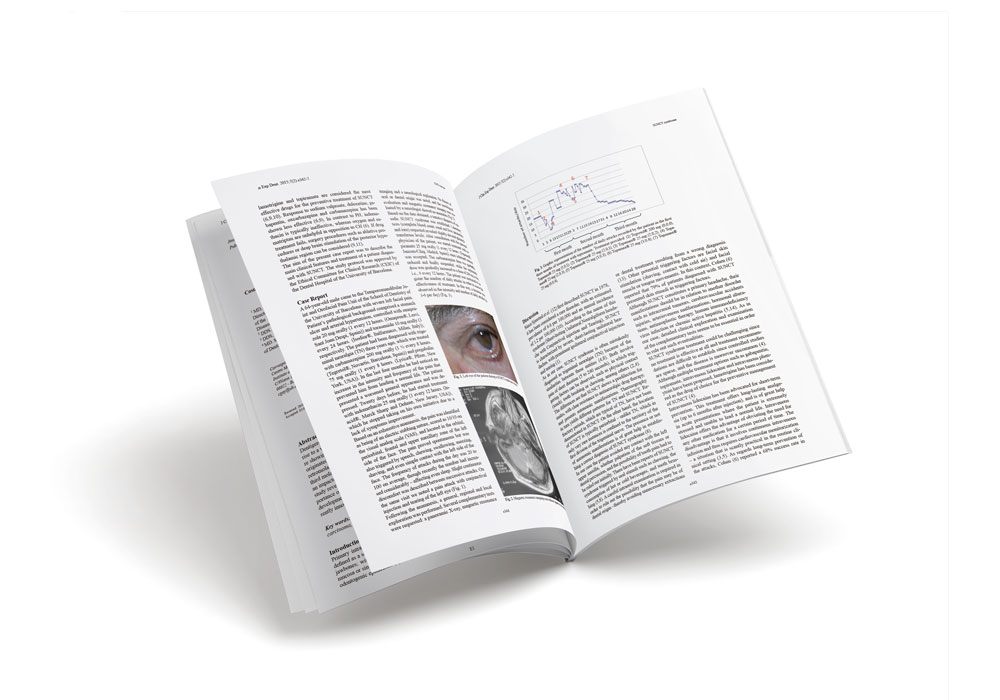
Sunct syndrome. Report of a case and treatment update
Short-lasting unilateral neuralgiform headache attacks with conjuntival injection and tearing (SUNCT) is considered
a rare trigeminal autonomic cephalgias, a group of primary headache disorders characterized by brief episodes of severe unilateral headache in the distribution territory of the trigeminal nerve, accompanied by prominent ipsilateral and cranial parasympathetic autonomic features. The present report describes a SUNCT syndrome in a 64-year-old male who had been diagnosed with trigeminal neuralgia several years ago. The patient reported stabbing pain in the orbital zone and in the left upper maxillary region, of great intensity, brief duration, and a frequency of 20-100 attacks a day. Pain episodes were accompanied by conjunctival injection and tearing. Based on the anamnesis, clinical examination and a magnetic resonance imaging scan, episodic SUNCT syndrome was diagnosed and pharmacological treatment with topiramate was started. This reduced the intensity and number of attacks to 3-6 a day.
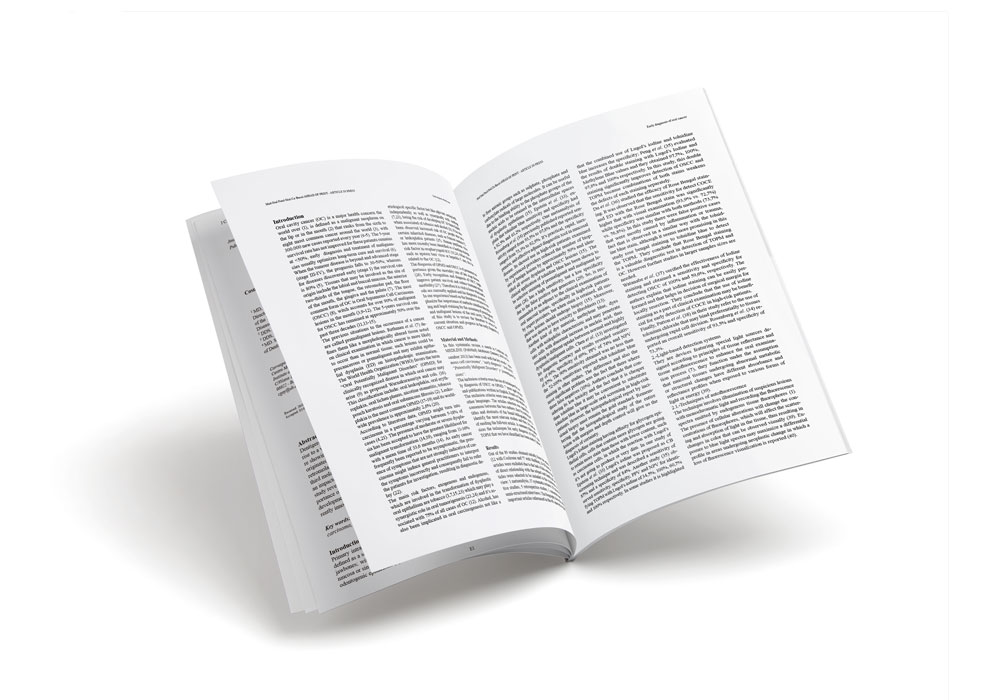
Techniques for early diagnosis of oral squamous cell carcinoma: Systematic review
Background and objectives: The diagnosis of early oral potentially malignant disorders (OPMD) and oral squamous cell carcinoma (OSCC) is of paramount clinical importance given the mortality rate of late stage disease. The aim of this study is to review the literature to assess the current situation and progress in this area. Material and Methods: A search in Cochrane and PubMed (January 2006 to December 2013) has been used with the key words “squamous cell carcinoma”, “early diagnosis” “oral cavity”, “Potentially Malignant Disorders” y “premalignant lesions”. The inclusion criteria were the use of techniques for early diagnosis of OSCC and OPMD, 7 years aged articles and publications written in English, French or Spanish. The exclusion criteria were case reports and studies in other languages.
Results: Out of the 89 studies obtained initially from the search 60 articles were selected to be included in the systematic review: 1 metaanalysis, 17 systematic reviews, 35 prospective studies, 5 retrospective studies, 1 consensus and 1 semi-structured interviews. Conclusions: The best diagnostic technique is that which we have sufficient experience and training. Definitely tissue biopsy and histopathological examination should remain the gold standard for oral cancer diagnose. In this systematic review it has not been found sufficient scientific evidence on the majority of proposed techniques for early diagnosis of OSCC, therefore more extensive and exhaustive studies are needed.
